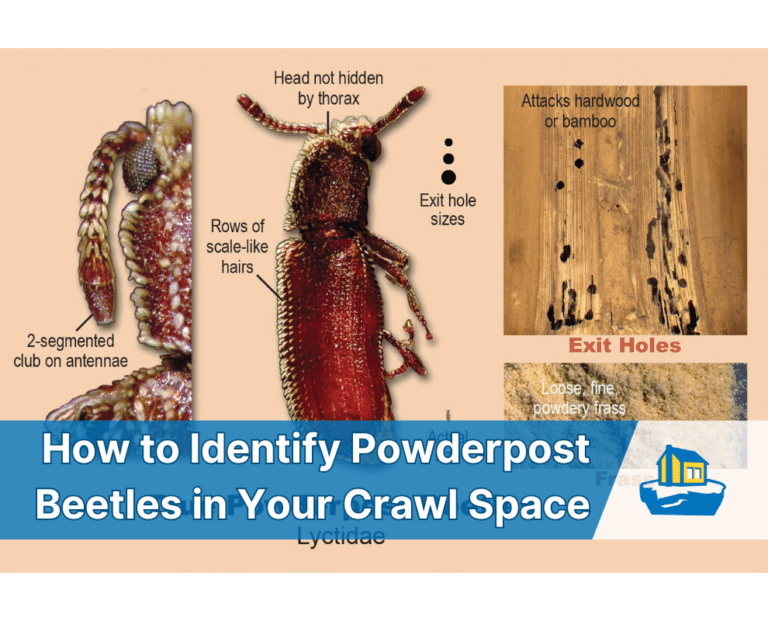4.9 1890+ Google Reviews

I am constantly stressing the importance of regularly checking your crawlspace for problems. As the old adage goes, an ounce of prevention is better (and cheaper) than a pound of cure. And part of that is knowing how to identify powderpost beetles in your home.
A few months ago I taught you how to look for termites in crawl space. Unfortunately, termites are only one of the many issues that your crawl space can suffer. Notably, powderpost beetle infestation is another.
There are two tell tale signs for a powder post beetle infestation.
I recommend inspecting your crawl space monthly for defects. If you see any of the signs above, you probably have, or had powderpost beetles in your crawl space.
Powderpost beetles are a common pest and can be found anywhere in the united states. Still, significant infestations are more likely in the Southeast (Virginia) where climate such as humidity is favorable. Here in Richmond, we have lots of damp crawl spaces that are perfect powderpost beetles.
First, female powderpost beetles lay eggs on the surface of wood, or just below the surface of unfinished wood. Next, the larvae hatch and begin their development process. Unlike other powderpost beetles, anobiid beetles can digest the cellulose in wood. So, the larvae feed on a piece of wood and tunnel through it until they are adult powder post beetles.
The larval stage is the stage when the most extensive damage occurs.
At adulthood they bore through the surface of the wood. Then, the males and females mate, and the females lay eggs again. Sometimes they will they will lay their eggs in existing exit holes. And the process begins again.
It is actually fairly simple to determine if you have an active infestation. Careful observation of the suspected area is all you need.
While it’s not always possible to prevent an infestation, there are steps we can take to greatly reduce the chance of an infestation.
Anobiid beetles are wood-boring beetles that feed of the structural timbers in our homes. Knowing how to identify powderpost beetle activity is a a nice skill to add to your tool belt. You should be performing regular inspections of your crawl space to determine if you have issues. If you think have an active infestation, or you’re not sure, call a professional pest control expert.